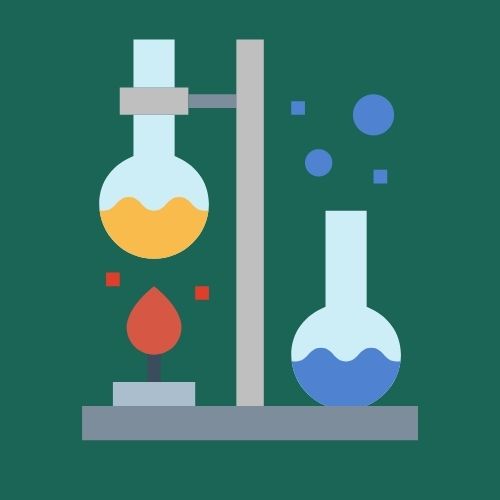When you start learning Chemistry at KS3 the first topic you will cover is Matter. It is vital you know about matter, how matter changes and what causes these changes.
Here we look at three areas we think are essential to understanding this topic and give you our tips for what is an absolute must to understand! This topic, like many others will feature in KS3 and KS4 so you need to get your head around it and make sure you can explain all the key concepts, then you will sail through and tests and GCSE questions on the topic.
💎 States of Matter
You need to have a clear understanding of the three states of matter, the properties they have and explain the key differences between Solids, Liquids and Gases. You need to be able to describe how each state of matter differs in terms of shape, volume, density, compressibility, and how easily the state of matter flows. To explain these you need to be clear on what density is and what we mean when we talk about compressing an object. Checking you can give a clear example of each will make it easier for you to understand and answer any questions you are given.
🟡 Particle Theory
The best way to explain particle theory is by using diagrams. You may be asked to draw these diagrams for each state of matter so make sure you know them and then must do and don’ts for each state of matter. For example in the diagram showing particle arrangement in a solid, make sure all your particles (usually drawn using circles) are arranged in a regular pattern and show they are touching. In a liquid. to show it can flow, the particles need to be arranged more randomly and not all of them need to be touching. Once you get the hang of these diagrams the concept becomes much easier to understand. We would recommend you test yourself regularly with practising drawing these diagrams and then checking your diagram against ones you have been given to learn.
🧊 Changes of State
The changes of state are physical changes of state that take place. This doesn’t change the particles, but it does alter their arrangement. To have a clear grasp of changes of state, try and explain what happens to a solid as you heat it and then the same for a liquid as you heat it. If you can explain this process, how the particles are arranged, how much energy the particles have and name the process, then you have covered all the key points. You need to have an understanding of what happens to particles during; melting, boiling, evaporation, condensing and freezing. Try and draw diagrams to explain these and think of real-life examples where you may see these changes taking place.
Hopefully, these tips help your understanding of the Matter topic. This will help with your learning and revision. We have many videos on our YouTube channel, including States of Matter, Particle Theory and Atoms & Elements.
KEEP UP TO DATE - DON'T MISS OUT!
Our regular newsletters are filled with helpful and interesting information to help you with your Science at school

